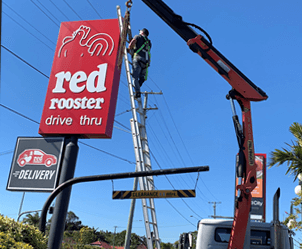If you’ve ever seen a car wrapped in vinyl, you know it’s fantastic. Wrapping your vehicle in vinyl is such a popular trend that there are companies that specialize in doing it for you. Of course, these companies will also charge you a lot of money for their services, but not if you follow these simple steps.
Sweep the surface clean.
Before you start wrapping, you want to ensure that your car is free of dirt and dust. Dust can cause wrinkles in your vinyl wrap so it’s vital to get rid of it before applying any adhesive. If stubborn pieces of dirt or debris are stuck on the surface, use a soft bristle brush to remove them.
A vacuum cleaner can help remove dust from crevices and edges. Your vacuum should have an attachable nozzle attachment so that you can clean tight areas around headlights, door frames and window sills without damaging any paintwork or trim.
Lay some plastic sheets and cardboard around your car so that the dirt, dust and debris do not stick onto your freshly cleaned and waxed paint job.
Measure surface dimensions
You’ll need to measure the length, width and height of the surface you wish to wrap. This can be done using a measuring tape or any other measurement system you prefer. Also, measure the distance between the centre of each hood and trunk and between each hood and roof.
Before getting started, get these things you’ll need for the task:
- A roll of masking tape
- A roll-off cuticle or other small scissors
- One smooth-flowing application squeegee
Flexibility
Vinyl comes in various weights and thicknesses, and the flexible vinyl films will be easier to apply and remove than a rigid vinyl wrap. This is because flexible vinyl has a stickier adhesive backing, making it much easier to hold onto your car while applying it. The resulting material is also more forgiving when mistakes are made. It’s also more forgiving if someone else tries their hand at applying the wrap instead of you. If they don’t get it right on their first attempt, simply lift the piece that doesn’t fit correctly and reapply. Flexible vinyl has another advantage over rigid, and it’s easier for artists who want to paint over top of your design later on.
Drape well, create tension
Once you’ve applied the vinyl, it’s time to create tension. This is where your heat gun comes in. First, use it to remove any bubbles. Then, use it to create tension as you take the slack and smooth out any wrinkles or creases. Finally, after all that has been done, and you’re happy with how everything looks (be sure to check from every angle), use your heat gun again to help flatten out any remaining bubbles and seal up any exposed areas that might risk coming loose later down the road.
Make sure there aren’t any loose pieces hanging around. If there are some hanging on by mere threads at this point, you’ll know when this happens because they’ll be super easy to pull off. Using a heat gun, gently shrink the vinyl around the edges.
Use magical glue
As you’re wrapping your car, you’ll need to apply vinyl glue to the vehicle’s surface and apply the wrap to it. Make sure you use good-quality glue that won’t damage either surface or material. You want to apply a thin layer of glue on both surfaces without smearing it too much. It won’t seep under the wrap and peel off later!
Conclusion
So, whether you’re wrapping your car or your kitchen countertop, these tips will help you get the job done.

